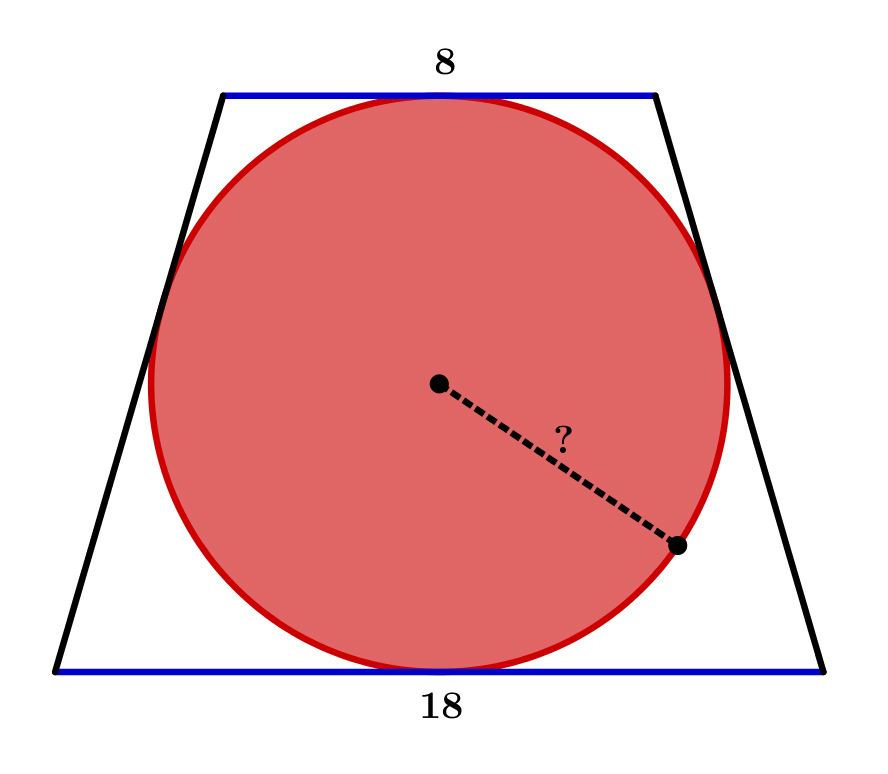Circle in a trapezium
Geometry
Level
3
A circle is inscribed in an isosceles trapezium, as shown below. The two blue sides have lengths 8 and 18, respectively. What is the radius of the circle?

The answer is 6.
This section requires Javascript.
You are seeing this because something didn't load right. We suggest you, (a) try
refreshing the page, (b) enabling javascript if it is disabled on your browser and,
finally, (c)
loading the
non-javascript version of this page
. We're sorry about the hassle.

Since it is a trapezium, ∠ A = ∠ B , ∠ D = ∠ C , A D = B C . It follows that D F = F C = 4 and A E = E B = 9 . Tangents to a circle drawn from an external point are equal, therefore, B H = E B = 9 and F C = C H = 4 . Thus, B C = 9 + 4 = 1 3 . It follows that A D = B C = 1 3 . From my figure, F E = D G = d i a m e t e r o f t h e c i r c l e .
Consider △ D G A : Since G E = D F = 4 , A G = 9 − 4 = 5
Applying pythagorean theorem on △ D G A , we get
D G = 1 3 2 − 5 2 = 1 4 4 = 1 2
Hence, the radius is 2 D G = 2 1 2 = 6